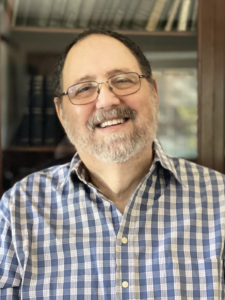
Rabbi Lance J. Sussman
Rosh Hashanah
One of the highlights of the last year for me was a trip to Poland. I was part of a small delegation of rabbis whose mission was to learn about the condition of Ukrainian Jews displaced in Poland and to learn about the Polish Jewish experience.
Our trip was immensely successful. We presented a Torah scroll to the staff of the Ukrainian Embassy in Warsaw and visited a nearby UNICEF school for Ukrainian students. The kids were serious, studious and shy. In addition to traveling to Krakow and the different sectors of Auschwitz, we visited numerous museums, archives and Jewish historical sites around the country.
I learned a great deal, wept and was compelled to do a great deal of deep thinking. I do not know if I will ever return to Poland (this was my third trip), but I will never stop thinking about it.
My trip to Poland this summer led me to reflect on the nature of Jewish tourism and its implications in contemporary Jewish life. I have long believed that travel, in general, is one of the best ways to learn and, in the context of synagogue and Jewish organizational life, a powerful way to create community. For example, of the various groups I have taken to Israel, Europe and on regional trips, many of the participants are still in touch with one another and often sit together at services and programs.
However, I also believe there is a more profound application of tourism to Jewish life in general. There are all types of trips and all types of tourists. One model is to plan a trip, map out your destination, pick your must-see stops and leave a little bit of room for spontaneity on the road.
A second kind of trip is an open-ended journey. Back in my college years, it was popular to go to Europe for $10 a day, buy a train pass and explore the open road.
A third type of trip is a pilgrimage. You want to visit a holy site like the Western Wall or go to the beaches of Normandy or the Grand Canyon to be awed by the vastness and beauty of the American West. The point of a pilgrimage is to be transformed, to complete a life goal and to find some measure of inner completeness.
How do these modes of travel apply to Jewish life?
For many of us, we are simply Jewish tourists. We plan a Jewish trip like attending a High Holy Day service. We pretty much know what to expect. We often have a timeline and are prepared to skip the long introductory prayers or, heaven forbid, leave before the sermon, and to be home ahead of traffic. We do our thing, complete our mission and, hopefully, have a pleasant, unplanned surprise or two.
For others, life can turn into a Jewish or spiritual journey. We do not always have a map; perhaps we have a few must-visit places but generally are open to where the road takes us. Staying home does not work anymore, we are looking for something new, cannot define but are captivated when an unexpected door opens, and we move into a new space. For some, a Jewish journey can last for a few months, sometimes for several years, sometimes for a lifetime.
In fact, sometimes the journey becomes a permanent state of affairs, and the journey itself becomes our Jewish home. The third model I am proposing is the pilgrimage. You know where you want to go. You long to go there to complete your mission. You are inspired, transformed and redirected. You expected the outcome but are surprised by its intensity and meaningfulness.
So what kind of Jewish journey are you planning for the New Year 5784? Will you be a tourist with a limited agenda, a well-defined timeline and a predetermined set of goals perhaps elevating, perhaps bearable if not slightly painful? Or are you beginning a new spiritual journey? Are you open to the unexpected, the impactful, the disruptive and the life-changing? Are you more eager to head right home or stay on the road for a little while longer? Or, perhaps, you are on a pilgrimage and crave hearing Kol Nidrei or Avinu Malkeinu and specifically looking for spiritual uplift and renewal?
As we enter the New Year, we need to think about our Jewish travel plans. Are we skipping the trip and staying home, sticking to a tight agenda, or are we open to a little bit of inspiration? Are we on a new or continuing Jewish journey, looking for new vistas, finding a new, unknown place called home or are we pilgrims with full hearts headed to a spiritual destiny we anticipate, if not crave?
As we begin 5784, think about your Jewish journey for the coming year and think about your Jewish travel plans. I hope the open road is calling you. I hope tours become journeys and journeys become pilgrimages.
In these dark and complicated times, spiritual travel may just be part of what you need! Have a safe journey and a happy, healthy new year!
Lance J. Sussman is rabbi emeritus of Reform Congregation Keneseth Israel in Elkins Park, the immediate past chair of the Board of Governors of Gratz College, an author and vice president of the Board of Rabbis of Greater Philadelphia. The Board of Rabbis is proud to provide diverse perspectives on Torah commentary for the Jewish Exponent. The opinions expressed in this column are the author’s own and do not necessarily reflect the view of the Board of Rabbis.







Thank you so much for taking this amazing trip. The pictures are poignant and reminiscent of the Jewish children who escaped the camps.
Zoom link to hear Rabbi Emeritus Sussman on a Zoom Monday night at 7:30 PM
ARE WE A CHRISTIAN NATION:JEWISH TALES FROM THE AMERICAN REVOLUTION